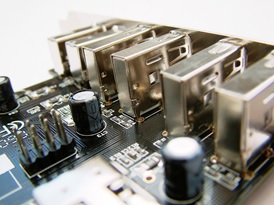Restriction of the use of certain Hazardous Substances (RoHS)
Most electronic product manufacturers will be familiar with RoHS, which attempts to reduce the amount of hazardous substances used in electrical and electronic equipment (EEE) which would ultimately affect human health and the environment. A recent change in the Legislation (as of the 2nd January 2013) now requires items within scope of the Directive (2011/65/EU) to be affixed with the CE mark. The RoHS Directive has been recently amended by the Amending Directive 2015/863 which has added four new substances as below.
Any and all EEE which fall into one of the following categories must adhere to the Directive:
Current Categories
– Large household appliances.
– Small household appliances.
– IT and telecommunications equipment.
– Consumer equipment.
– Lighting equipment.
– Electrical and electronic tools.
– Toys, leisure and sports equipment.
– Automatic dispensers.
– Medical devices (Since 22/7/14).
– Monitoring and control instruments (Since 22/7/14)
– In Vitro Medical devices (Since 22/7/16)
– Industrial monitoring and control instruments (Since 22/7/17)
Future Categories
– Other EEE not covered by any of the other categories (From 22/7/19)
Exclusions include:
- Items in scope, but fall within exemptions of specific applications listed within Annex III and IV of the Directive
- Equipment which is necessary for the protection of the essential interests of the security of Member States, including arms, munitions and war material intended for specifically military purposes;
- Equipment designed to be sent into space;
- Equipment which is specifically designed, and is to be installed, as part of another type of equipment that is excluded or does not fall within the scope of this Directive, which can fulfil its function only if it is part of that equipment, and which can be replaced only by the same specifically designed equipment;
- Large-scale stationary industrial tools;
- Large-scale fixed installations
- Means of transport for persons or goods, excluding electric two-wheel vehicles which are not type-approved;
- Non-road mobile machinery made available exclusively for professional use;
- Active implantable medical devices;
- Photovoltaic panels intended to be used in a system that is designed, assembled and installed by professionals for permanent use at a defined location to produce energy from solar light for public, commercial, industrial and residential applications;
- Equipment specifically designed solely for the purposes of research and development only made available on a business-to-business basis.
Conformity Requirements
 The materials used for the electrical and electronic equipment, including components and spare parts for repair, should not contain any of the following substances:
The materials used for the electrical and electronic equipment, including components and spare parts for repair, should not contain any of the following substances:
- Cadmium (0,01 %)
- Lead (0,1 %)
- Hexavalent Chromium (0,1 %)
- Mercury (0,1 %)
- PBB’s (Polybrominated biphenyls) (0,1 %)
- PBDE’s (Polybrominated diphenyl ethers) (0,1 %)
The substances below have been further added to the scope of the Directive by Amending Directive 2015/863/EU.
- DEHP (Bis (2-ethylhexyl) Phthalate)
- BBP (Butyl Benzyl Phthalate)
- DBP (Dibutyl Phthalate)
- DIBP (Diisobutyl Phthalate)
When measured they cannot contain a greater concentration of the hazardous material than those given above in homogenous materials, in comparison to its weight. The responsibilities within the Directive are set out for three different types of economic operators; Manufacturers, Distributors and Importers. Below is an example of the responsibilities that are applicable for manufacturers.
Manufacturers Responsibilities
Of course the obvious point is manufacturers must ensure the substances are not contained within their product. To prove this they must put together technical documentation concerning the product and evidence of the materials used. Which is more than just the RoHS declarations for each component!
Technical documentation will need to be kept for a minimum of 10 years after the product has been placed on the market.
Of course you will also need to ensure that series manufacture of the product does not harm its conformity. If a batch is found to be non-conforming then it is your duty as the manufacturer to recall the products and keep distributors informed.
The product itself needs to be marked with:
- A CE mark
- A type, batch or serial number
- Your name, registered trade name or registered trade mark
- A contact address
If you suspect that a product you have already sold might not conform, you must inform the relevant national authorities, and take measures to bring it into conformity, withdraw or recall the product as appropriate. If a national authority requests the conformity documentation, you must provide all information necessary to prove conformity in the appropriate language.
At present there is only one harmonised standard for RoHS: EN 50581:2012 (Technical documentation for the assessment of electrical and electronic products with respect to the restriction of hazardous substances)
Which is particularly helpful if you are not sure exactly what should go into your technical file.
Further help and advice
If you need further support with CE Marking your products under the RoHS Directive, then please call the technical team on 01564 792349.










